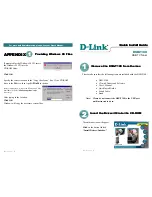
MFJ-945D Instruction Manual
3
Installation
SAFETY NOTE: LOCATE THE TUNER SO THE REAR IS NOT ACCESSIBLE DURING
OPERATION.
1.
Locate the tuner in a convenient location at the operating position.
2.
Install the tuner between the transmitter and the antenna as shown in the diagram at left.
Use a coaxial cable (such as RG-8/U) to connect the transmitter (or amplifier) to the
connector marked TRANSMITTER on the rear of the tuner.
3.
Use a coaxial cable (such as RG-8/U) to connect the connector marked ANTENNA on the
rear of the tuner to the antenna. If use of more than one antenna is required, install a coax
switch between the tuner and the antennas.
For wire antennas an appropriate balun should be used between the coax from the tuner to
the wire feed to the antenna.
4.
A ground post is provided for an RF ground connection.
Using The MFJ-945D
CAUTION: Never Change The Antenna or Inductor Selector Switch Position While
Transmitting! Never Apply More Than 300 Watts To The MFJ-945D.
In any conventional "T" network tuner, maximum power handling and smoothest tuning occur
when the capacitance in the network is as large as possible. In this tuner the TRANSMITTER
and ANTENNA controls have maximum capacitance at position 0 (fully meshed), and
minimum capacitance at position 10 (fully open). Use the highest capacitance possible (lowest
number on the front panel scale) for each band for the smoothest tuning, highest efficiency, and
greatest power handling capability. The chart in the tuning instructions shows typical capacitor
settings that can be used for each amateur band.

























